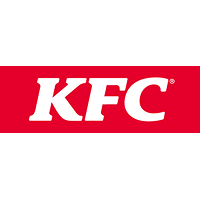They are the Canadian company behind some of the world's biggest sporting organisations' schedules and they believe the NRL draw is the most complex in all of sport.
Optimal Planning Solutions is the same company behind the NFL draw, and major world soccer leagues in France, Scotland and the USA. They’ve previously worked on Major League Baseball too – a small matter of 30 teams and 162 games per clubhouse.
But the NRL draw, complete with representative fixtures, broadcast demands and club requests is the most complex they have worked on.
Rick Stone and Kirk Pinneo flew from Canada to Sydney two weeks ago and have been at Rugby League Central, with their Game Scheduling Software and NRL staff working together in overdrive to get the NRL draw released late this week and say the complexity of the draw comes from a unique combination of representative fixtures, broadcaster entitlements and the NRL’s objective of meeting as many club priorities as possible.
Finalising the draw has become a much more complicated process this year due to the necessity of locking in all the times and dates for the first 20 rounds of the competition, something that hasn’t been done before at the NRL.
With 192 individual events to schedule across venues that involve multiple hirers, while trying to match requests of the 16 clubs, it is an enormous logistical exercise.
“The biggest change is the scheduling, it is a completely different approach to the draw this year,” Stone explains to NRL.com.
"No other sport puts such a priority on club requests.
“Instead of organising the season draw by round, the NRL has had to organise 20 rounds into complete timeslots, which is a much more involved process consisting of a wide range of variables.
“It is a number of steps further than just picking each round. The broadcasters are asking for certain matches and time slots and the process of moving just one game can totally change the whole draw.
“It can be like a water balloon in that if you try to block a leak on one side, it puts more pressure on the other side, so changing one element of the draw can completely change the final make-up.”
The software which has been used by the NRL for six years revolves around a unique penalty system that lets the individual sport customise and define key scheduling constraints and quantify key objectives of the final fixtures list.
The algorithm of the Game Scheduling Software calculates the best possible draw derived from a set list of parameters dictated by the sport, in this case, the NRL.
These parameters can range from travel, amount of day and night fixtures, availability of venues, the turnaround between games, consecutive games away from home and the gap between return fixtures to name a few.
There are literally trillions and trillions of different possibilities and over 50 million possible penalty points that can be accrued. The final draw will be whittled down to a mere 7,000.
It is not an exact science, but the system allows the best possible outcome based upon the criteria given to it by the NRL, clubs and broadcasters.
“The penalty element we have worked into our system is one of the most important components of our draw,” Stone said.
“The higher the penalty count the less desirable it is to see it in the final draw. When we get a draw, the system gives us a report and shows how many penalty points have been accrued. Obviously the less points the better the draw.
“We are negotiating what we change to lower that score – which will be a better result for all the clubs.
“The weight of the penalties is dictated by the clubs, for example playing multiple games on the road, certain teams draw better on certain days, the amount of rest between games etcetera.
“This schedule we are working towards has 7,800 penalty points out of a possible 50 million that could happen. So we are constantly looking to get that down further, but it is looking pretty good.”
While the NRL has tried to cater for all markets, the organising body is quick to point out that not everyone is going to be happy. The biggest challenge is to manage expectation.
In fact, the most desirable outcome according to the Canadian-based company is when everyone complains.
“If everyone is equally upset, you know you have a good draw,” Stone deadpans.
“We have found even from the same club you can get wide-ranging opinions on what they want. Management wants one thing, the coaching staff another, so you cannot please everybody even in the same club, let alone across 16 clubs all with their own requirements and expectations.
“The biggest problem with designing a draw is two or three clubs want something that is mutually exclusive, clubs who pick the exact opposite thing to each other.
“Everyone wants to start at home and everyone wants to finish at home. Straight away you have a conflict of interest.”
The NRL draw is expected to be released later this week and will be available in its entirety first on NRL.com.

